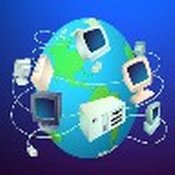TECHNOLOGY
WELCOME TO THE TECHNOLOGY DEPARTMENT
The mission of the Quitman County School System Technology Department is to provide and support an environment in which all stakeholders - students, educators, support staff, parents, and the community - use technology as a tool in all facets of the educational process. Technology will be utilized to ensure that all students, including those with disabilities, have an equal opportunity to access technology, to graduate high school, and to be successful in an information-driven, global society.
Quitman County School System wants to be recognized as a world-class school system that holds a vision of excellence for all students with a 100% graduation rate with successful student progression at each level. The district's mission: To ensure the academic success of each child, each day, no excuses.
It is imperative that education remain relevant to the age in which we live. The ability to gather, manipulate, and present data using technology as the medium is a required skill in the emerging global community. Technology promotes the development of essential higher-order thinking skills in a life-long learning model of education. The use of computers and other technologies for problem solving has been identified as an integral component for a student's success in higher learning and in the new workplace. The Quitman County School District's vision for technology is that students will be fluent in the use of technology so that its application becomes commonplace for them.
Mrs. Twanda Banks, Technology Coordinator
(229) 310-7033

TECHNOLOGY PLAN, GUIDELINES, FORMS & PROCEDURES
QCSD TECHNOLOGY PLAN 2021-2026
DISASTER RECOVERY PLAN
TECHNOLOGY DISPOSAL PROCEDURES/GUIDELINES
- QCSD Virus Backups and SPAM and Misc.docx
- QCSD Guest and Vendor Network Access.docx
- QCSD Security Awareness Procedure.docx
- QCSD Logial Access Procedures.docx
- QCSD Backup Procedure.docx
- QCSD Incident Response Procedure.docx
- QCSD Change Mangement Procedure.docx
- QCSD Remote Access Procedure.docx
- QCSD Request for Disposal Form.docx
- QCSD Technology Disposal Procedures.docx
Technology Policies, Forms and Guidelines
- QCSD iPad--Student Handbook PS Forms.pdf
- QCSD Student iPad repair form.docx
- QCSD Property Inventory Excel Form.xlsx
- QCSD iPad Repair form for Staff.docx
- DIRECTIONS FOR OBTAINING VERIZON DISCOUNT.pdf
- QCSD Faculty Device Inventory.docx
- QCSD Staff AUP.docx
- QCSD iPad & MacBook Staff Handbook.docx
- QCSD Student`s AUP.docx
- QCSD Student`s Media Release Form.pdf
- QCSD Social Media Procedures & Guidelines.docx
- QCSD Laptop Agreement Form.docx
- QCSD CIPA.docx
- QCSD Acceptable Use and Safety Guidelines.docx
